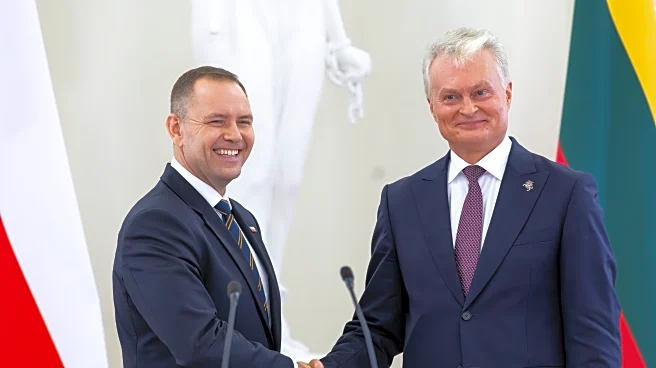What's Happening?
Lithuania has taken delivery of the first two Sikorsky UH-60M Black Hawk helicopters, marking a significant upgrade in its military aviation capabilities. The delivery is part of a contract signed in November
2020 for four helicopters, intended to replace the aging Soviet-made Mi-8 'Hips'. The Lithuanian Armed Forces announced the arrival of these helicopters on October 19, highlighting their advanced features such as more powerful General Electric T700-GE-701D engines, enhanced rotor blades, and a fully digital 'glass' cockpit. The acquisition is part of Lithuania's broader efforts to modernize its military equipment, with the option to purchase two additional Black Hawks approved by the U.S. government.
Why It's Important?
The delivery of Black Hawk helicopters to Lithuania is a strategic move to bolster its defense capabilities amid regional security concerns. As a NATO member, Lithuania's enhanced military assets contribute to the alliance's overall readiness and deterrence posture in Eastern Europe, particularly in light of tensions with Russia. The modernized fleet will improve Lithuania's operational flexibility and response times, potentially influencing regional military dynamics. This upgrade also reflects Lithuania's commitment to aligning its military capabilities with NATO standards, thereby strengthening collective security measures.
What's Next?
Lithuania may consider exercising its option to acquire two additional Black Hawk helicopters, further expanding its fleet and replacing other outdated models like the French-built Aerospatiale AS365 N3+ Dauphins. The integration of these helicopters into Lithuania's military operations will likely involve extensive training and strategic planning to maximize their effectiveness. As Lithuania continues to modernize its military, it may seek further collaborations with NATO allies to enhance interoperability and joint operational capabilities.
Beyond the Headlines
The acquisition of Black Hawk helicopters by Lithuania underscores the broader geopolitical shifts in Eastern Europe, where NATO members are increasingly investing in advanced military technologies to counter potential threats. This move may prompt neighboring countries to reassess their defense strategies and procurement plans, potentially leading to an arms race in the region. Additionally, the procurement highlights the role of U.S. defense exports in shaping global military alliances and strengthening ties with partner nations.












